Grow lights help houseplants bring nature inside
An LED grow light is designed to stimulate plant growth by emitting electromagnetic radiation over the spectral range that photosynthetic organisms and other plant photoreceptors are able to use for growth and development. The energy of the radiation is used to acclimate houseplants to an indoor environment. Houseplants bring nature inside and deliver an endless show of lasting beauty. Enjoyed by people the world over, houseplants are frequent showpieces in home décor and furnishing vignettes. The pop of color spruces up living spaces, provides visual enjoyment, and creates a sense of emotional calm. Houseplants not only provide the indoors with the vibe of nature, but can also clean the air you breathe. The oxygen that leaves the plant through the stomata as a byproduct of photosynthesis refreshes the air of a stuffy room. Indoor air can be swarming with toxic gases known as volatile organic compounds (VOCs). Growing houseplants have been proven to contribute to a significant reduction of the most prevalent VOCs such as formaldehyde, benzene and trichloroethylene.
Types of houseplants
Houseplants come in a huge array of sizes, forms, colors and textures. Many show off architecturally stunning foliage, and others impress with beautiful blooms in every appealing color. Some of the most commonly cultivated indoor plants include bromeliads, cast iron plant, Chinese evergreen, golden pothos, grape ivy, snake plant, false aralia, Hawaiian schefflera, bamboo palm, tree yucca, ponytail palm, sego palm, sansevieria, candelabra cactus, jade plant, bromeliads, various cacti, dracaena, weeping fig, rubber tree, schefflera, false aralia, ponytail palm, tree yucca, Norfolk Island pine, peace lily, crown of thorns, kalanchoe, moth orchid, flowering maple, gloxinia, African violet, geraniums, tropical hibiscus, Christmas cactus, Boston fern, asparagus Fern, Swedish ivy, English ivy, airplane plant, grape ivy, hoya, wandering jew, and nephthytis. Houseplants are basically plants taken out of their native habitat. Most houseplants originate in tropical or subtropical forests. Growing them indoors requires simulation of the environmental variables, such as ambient temperature, water, humidity, and light conditions.
Light is a fuel for photosynthesis
Light is the most important variable that influences the growth and development of indoor plants. Plants use light to drive photosynthesis which converts water and carbon dioxide into glucose (and ultimately other carbohydrates, proteins and fats) and oxygen. Glucose is used to fuel metabolic processes for the biosynthesis of partial amino acids, lipids and fatty acids, vitamins, nucleotides, and isoprenoids, and the reduction of nitrites and sulfates. Excess glucose is used for biomass formation which results in stem elongation, increase of leaf area, flowering, fruit formation, etc.
The energy of light captured by light harvesting pigments which include chlorophyll A, chlorophyll B and carotenoids. The number of photons that are absorbed by chlorophylls inside the chloroplasts of the plant cells directly influences the rate of photosynthesis. However, not all photons that hit a plant are absorbed by chlorophylls. The only part of the electromagnetic spectrum which can be used by a plant for its photosynthesis is between 400 nm and 700 nm. The waveband of electromagnetic radiation is called the photosynthetically active radiation (PAR) region.
The absorption spectrum of chlorophyll A and B peaks in the blue and red regions of the electromagnetic spectrum from 625 to 675 nm and from 425 to 475 nm, respectively. Chlorophyll A is the most important photopigment that drives 75% of photosynthetic activity. Chlorophylls are not the only photoreceptors that are used by plants for photosynthesis. Carotenoids such as xanthophylls and carotenes which have an absorption range from about 400-510 nm drive photosynthesis by transferring absorbed excitation energy to chlorophylls.
Light sends environmental signals to houseplants
Plants also use the spectrum, intensity and direction of light as a source of information. Signal-transducing photoreceptors sense these light signals and modulate the growth and development of the plant to match the conditions in their environment. Three major groups of photoreceptors that use light as a cue to modify plant biology are phytochromes, cryptochromes, and phototropins. These photoreceptors control photomorphogenesis, photoperiodism and phototropism of plants.
Phytochromes mediate changes in gene expression to influence germination (photoblasty), hypocotyl elongation, apical hook straightening, leaf building, flowering time, photoperiod, circadian rhythm entrainment, and chlorophyll biosynthesis. The absorbance wavelengths of phytochromes lay mostly outside of the PAR region. The inactive form of phytochrome which is called Pr converts into its physiologically active form of phytochrome (Pfr) when exposed to radiation in the red region of the spectrum. In darkness (slow reaction) or by exposure to electromagnetic radiation in the far-red region of the spectrum Pfr is converted back into Pr.
Pr and Pfr have their absorption peaks at 660 nm and at 730 nm, respectively. Plants grown under radiation with a high red:far-red ratio have short internodes and compact growth, whereas a low red:far-red ratio leads to the shade avoidance syndrome (SAS). The SAS can result in impaired root growth, nodulation of legumes, leaf development, as well as reduced production of many secondary metabolites involved in disease resistance.
Cryptochromes and phototropins absorb photons with wavelengths in the UV-A/blue region of the spectrum. They work in conjunction to regulate processes such as stomatal opening, phototropism, chloroplast movement, endogenous rhythms, leaf flattening, growth of roots, redox balance, de-etiolation of the hypocotyl, the level of cyclic nucleotides, etc.
Legacy lighting technologies
Lack of adequate photosynthetically active radiation is the most common factor limiting the growth of indoor plants. Grow lights are therefore often needed to drive the photochemical process of photosynthesis when there is absence of sunlight or supplemental light is required, especially during light limiting conditions (e.g., dark corners, winter months, cloudy days). Professional growers have typically used high intensity discharge (HID) sources, i.e., metal halide (MH) or high-pressure sodium (HPS) lamps to create conditions that are most conducive to growing plants. However, HID lighting is obviously not the choice of technology for houseplant lighting because the radiant infrared (IR) energy emitted by HID lamps can overheat and stress plants in home and office environment where the grow light should be positioned close to a plant.
In the past, indoor plant lighting had been accomplished using compact fluorescent lamps (CFLs) or linear fluorescent tubes because these lamps radiate little heat and are available in wattages and form factors suitable for indoor uses. But fluorescent lighting is far from being a qualified technology. The electromagnetic radiation emitted by fluorescent lamps has a significant deficiency in wavelengths that the key plant photoreceptors react to.
LED technology is a game changer
LED technology has now emerged as the clear choice for horticulture lighting applications. LEDs are semiconductor devices that capitalize on the effect of injection electroluminescence to generate electromagnetic radiation. The technology platform offers the new capability of controlling radiant the energy emitted by the source at the different wavelengths of the visible spectrum. This level of spectral controllability enables the spectral power distribution (SPD) of an LED system to be tailored to the optimal needs of the plants being cultivated. The spectral content can be tweaked to carry out very specific functions: inducing seed germination, influencing the shape of the plant, regulating flowering time, etc. As LEDs do not produce radiant heat, it is possible to place the grow light close to the plant without burning or wilting the leaves. This proximity results in a higher photosynthetic photon flux density (PPFD) that ultimately contributes to higher photosynthetic productivity and biological effectiveness in triggering particular photomorphogenic responses or photoperiodic signals. With solid state construction, small source size and optical directionality, LED lighting provides for new form factors that are not constrained by limitations of the previous technologies.
Spectrally optimized LED lighting
LED indoor plant lights must be designed to perform an essential function but the aesthetical aspect of interior lighting needs to be considered as well. These fixtures are either integrated into the grow light systems such as shelves and stands or designed as standalone fixtures which are at least not visually obtrusive to the interior space. A variety of products are offered on the market for houseplant lighting applications. They include table and floor standing fixtures, light panels, light strips, light bars, etc.
LED grow lights designed for houseplant lighting applications are generally lower wattage systems which draw less than 100 watts of electrical power. Supplemental lighting for seedlings and growth of pot plants typically requires a PPFD of less than 200 μmol/m²/s. A plant light is often designed to produce a blend of full spectrum light which helps maximize photosynthetic absorption efficiency while influencing the development of specific plant characteristics.
Red light has the highest quantum efficiency for driving photosynthesis and thus induces some of the fastest and tallest growth in plants. In general, red light promotes stem elongation, root development, leaf expansion, and biomass accumulation. Blue light encourages thick leaves, strong stems and plant compactness. However, over exposure to blue radiation can inhibit growth, so blue light must be carefully controlled. Some LED plant lights carry a spectrum that span multiple wavelengths to include green, far-red, deep blue, and ultraviolet light for a wider variety of beneficial responses.
Houseplant lighting needs to take care of human vision
Red and blue are the most important colors for plant growth, but it may be inappropriate to use a mix of red and blue LEDs in indoor plant lights unless an emphasis on red and blue light is critical to a particular application. The monochromatic blue and red emissions can appear visually distracting in a living or office space. A more viable solution is to use phosphor converted LEDs that produce visually comfortable white light. These LEDs can be engineered to produce electromagnetic radiation with wavelengths covering the whole visible range of the spectrum that plant photoreceptors are able to use. Phosphor converted LEDs used in indoor plant lights are either mid-power plastic leaded chip carrier (PLCC) LEDs or chip-on-board (COB) LEDs. Mid-power PLCC LEDs are known for delivering high photosynthetic photon efficacy (PPE). COB LEDs are capable of delivering a more uniform light distribution from a single package.

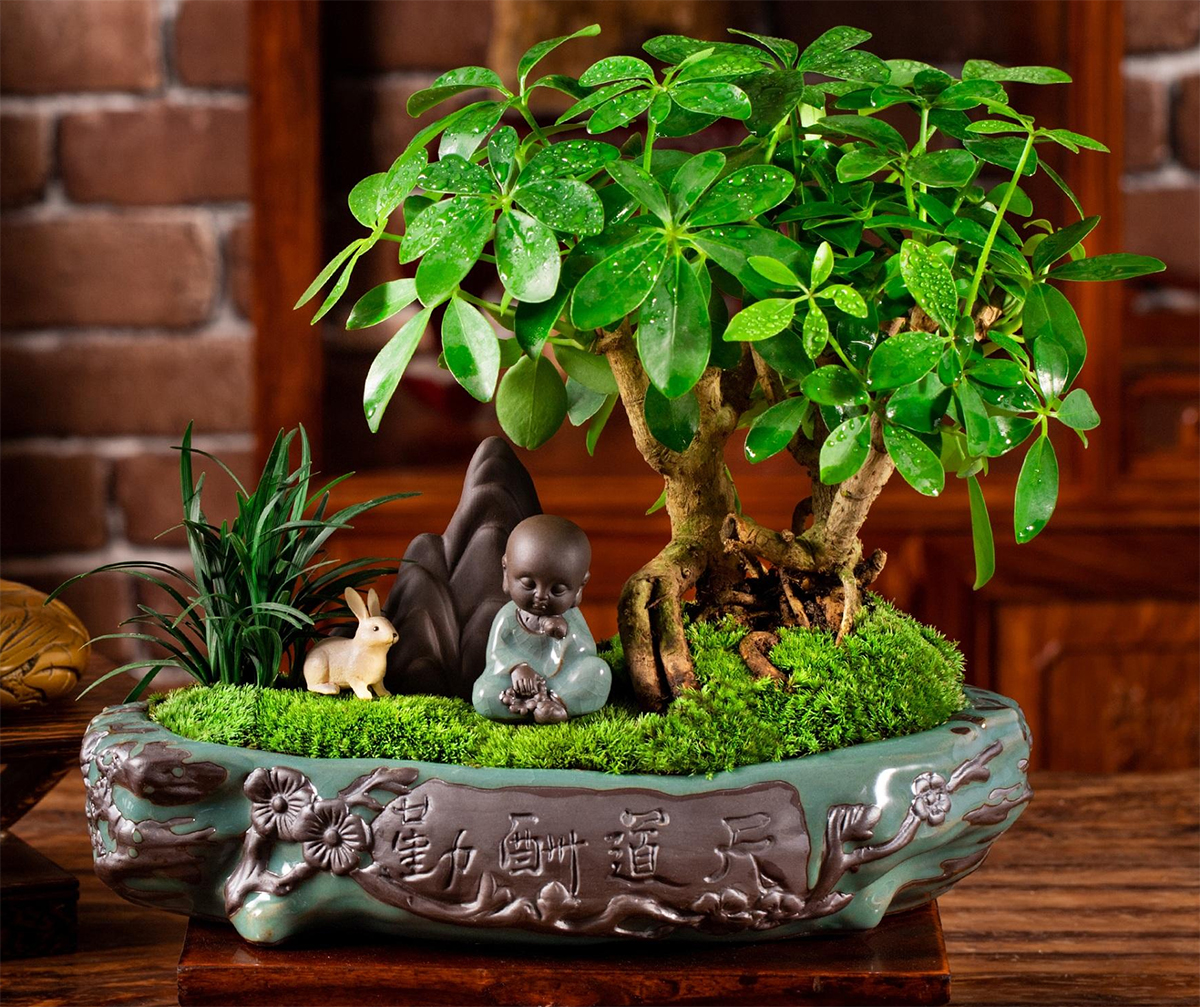
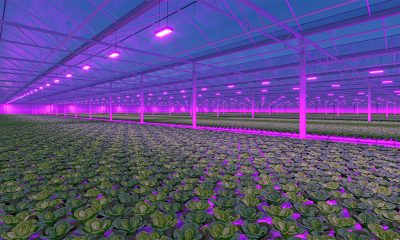
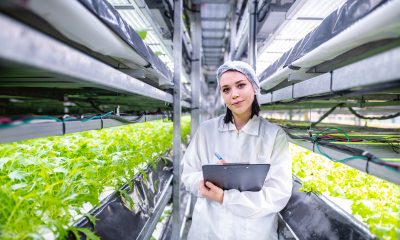
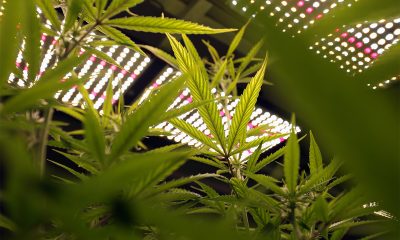
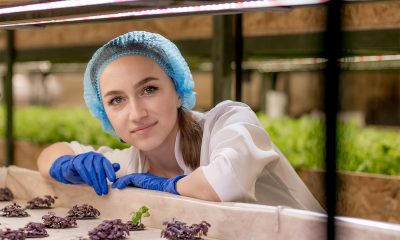
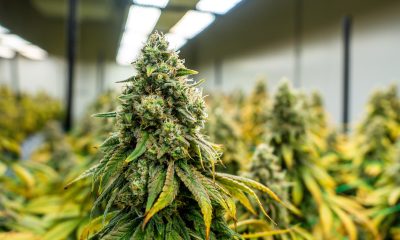
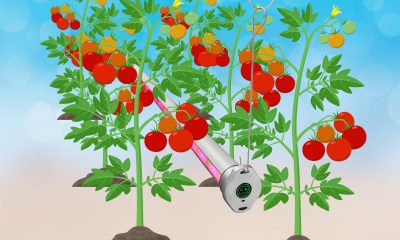
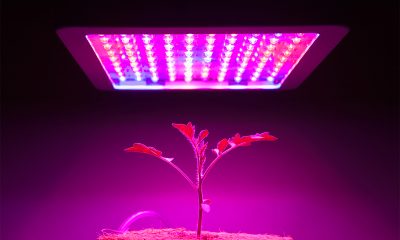
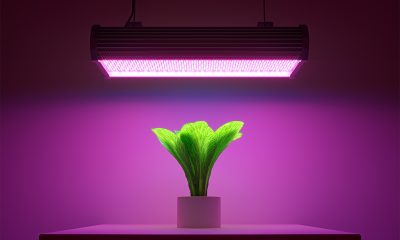
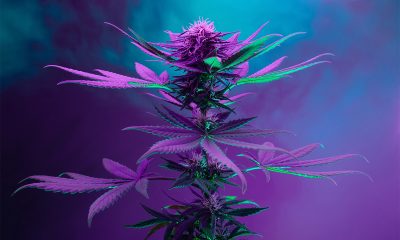





Loading...